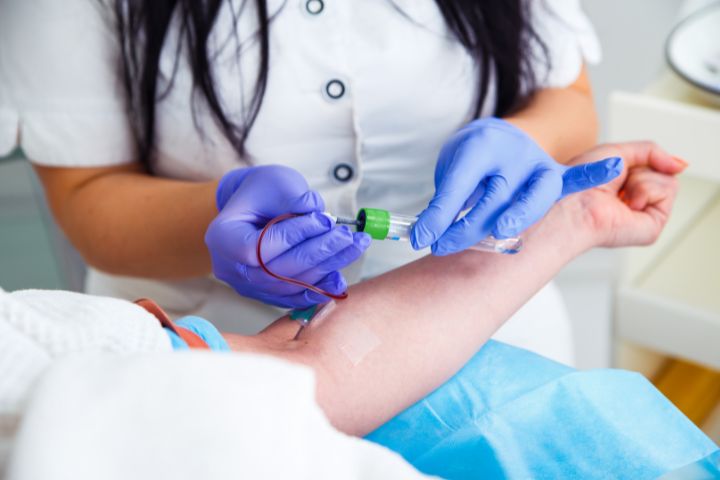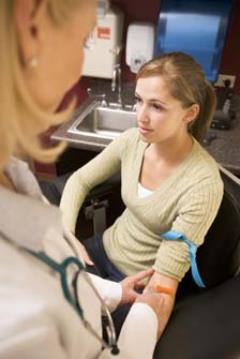Some Known Facts About Northeast Medical Institute - New Haven Campus Phlebotomy Course & Cna Class.
Some Known Facts About Northeast Medical Institute - New Haven Campus Phlebotomy Course & Cna Class.
Blog Article
The smart Trick of Northeast Medical Institute - New Haven Campus Phlebotomy Course & Cna Class That Nobody is Talking About
Table of ContentsOur Northeast Medical Institute - New Haven Campus Phlebotomy Course & Cna Class IdeasIndicators on Northeast Medical Institute - New Haven Campus Phlebotomy Course & Cna Class You Need To KnowA Biased View of Northeast Medical Institute - New Haven Campus Phlebotomy Course & Cna ClassSome Known Details About Northeast Medical Institute - New Haven Campus Phlebotomy Course & Cna Class Some Of Northeast Medical Institute - New Haven Campus Phlebotomy Course & Cna ClassHow Northeast Medical Institute - New Haven Campus Phlebotomy Course & Cna Class can Save You Time, Stress, and Money.
Nonetheless, the use of such tools need to be accompanied by other infection avoidance and control techniques, and training in their usage. Not all security tools apply to phlebotomy. Before choosing a safety-engineered device, users should extensively explore readily available tools to establish their appropriate use, compatibility with existing phlebotomy techniques, and efficiency in securing team and individuals (12, 33).For setups with low sources, expense is a driving element in purchase of safety-engineered gadgets. Where safety-engineered gadgets are not available, skilled use of a needle and syringe is appropriate.
One of the necessary markers of quality of care in phlebotomy is the involvement and participation of the person; this is equally useful to both the wellness worker and the client. Clear info either composed or spoken need to be available to every client who goes through phlebotomy. Annex F offers sample message for clarifying the blood-sampling treatment to a client. labelling); transport problems; analysis of outcomes for professional administration. In an outpatient division or center, give a committed phlebotomy cubicle containing: a clean surface with 2 chairs (one for the phlebotomist and the various other for the person); a hand wash basin with soap, running water and paper towels; alcohol hand rub. In the blood-sampling area for an outpatient division or clinic, give a comfortable reclining sofa with an arm remainder.
The Facts About Northeast Medical Institute - New Haven Campus Phlebotomy Course & Cna Class Uncovered
Ensure that the indicators for blood tasting are plainly specified, either in a written procedure or in recorded instructions (e.g. in a research laboratory form). In all times, adhere to the strategies for infection prevention and control listed in Table 2.2. Infection avoidance and control techniques. Collect all the equipment needed for the procedure and area it within secure and very easy reach on a tray or cart, making sure that all the things are clearly noticeable.
Where the client is grown-up and aware, follow the steps detailed listed below. Introduce on your own to the individual, and ask the patient to state their complete name. Check that the lab kind matches the patient's identification (i.e. match the person's details with the laboratory form, to make sure exact recognition). Ask whether the patent has allergic reactions, anxieties or has ever before collapsed during previous shots or blood draws.
Make the client comfy in a supine setting (when possible). Place a tidy paper or towel under the patient's arm. Discuss the test to be executed (see Annex F) and get verbal approval. The client has a right to decline a test at any type of time prior to the blood sampling, so it is very important to ensure that the client has understood the treatment.
The Ultimate Guide To Northeast Medical Institute - New Haven Campus Phlebotomy Course & Cna Class
Expand the client's arm and evaluate the antecubital fossa or lower arm. Locate a blood vessel of a great size that is visible, straight and clear.
DO NOT place the needle where capillaries are diverting, since this raises the chance of a haematoma. Locating the vein will certainly assist in determining the correct dimension of needle.
Samplings from central lines lug a threat of contamination or erroneous research laboratory examination results. It is acceptable, however not ideal, to draw blood specimens when first presenting an in-dwelling venous tool, before attaching the cannula to the intravenous fluids.
More About Northeast Medical Institute - New Haven Campus Phlebotomy Course & Cna Class
Failing to permit adequate call time raises the threat of contamination. DO NOT touch the article source cleansed website; in certain, DO NOT place a finger over the capillary to assist the shaft of the exposed needle.
Ask the client to develop a hand so the veins are extra prominent. Get in the vein swiftly at a 30 degree angle or less, and remain to introduce the needle along the vein at the easiest angle of entry - CNA Training. Once adequate blood has actually been accumulated, release the tourniquet prior to withdrawing the needle
The Facts About Northeast Medical Institute - New Haven Campus Phlebotomy Course & Cna Class Uncovered
Withdraw the needle delicately and apply mild stress to the website with a clean gauze or dry cotton-wool round. Ask the individual to hold the gauze or cotton woollen in location, with the arm expanded and increased. Ask the patient NOT to bend the arm, due to the fact that doing so causes a haematoma.

What Does Northeast Medical Institute - New Haven Campus Phlebotomy Course & Cna Class Do?
Do not push the syringe plunger due to the fact that added stress raises the threat of haemolysis. Where possible, maintain televisions in a shelf and relocate the shelf in the direction of you. Infuse downwards into the appropriate coloured stopper. DO NOT eliminate the stopper due to the fact that it will certainly release the vacuum. If the example tube does not have a rubber stopper, infuse exceptionally slowly right into the tube as minimizing the pressure and rate utilized to transfer the specimen lowers the risk of haemolysis.

Report this page